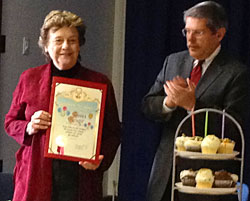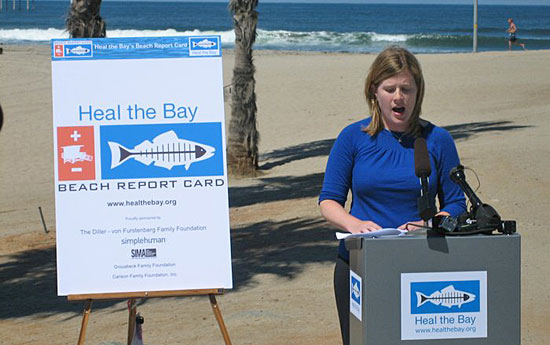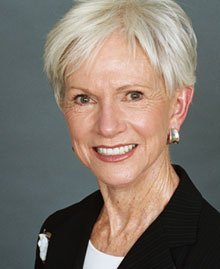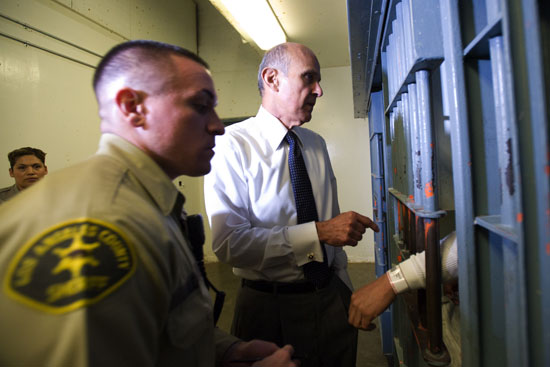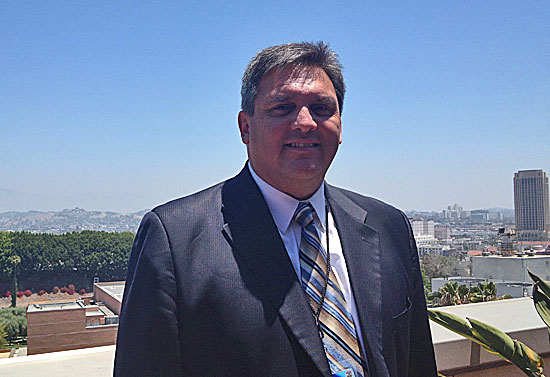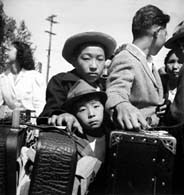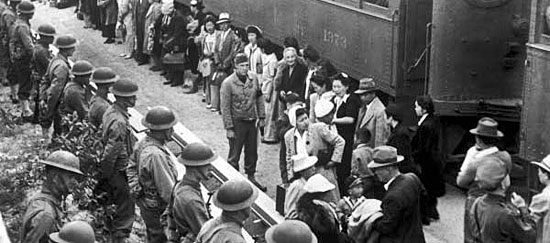Lots of weekend closures ahead
June 19, 2012
The mega-project to reconstruct the Wilshire ramps to the 405 Freeway doesn’t start till next week, but things will be plenty busy after hours in the area over the next few days.
Starting tonight, Thursday, June 14, Sepulveda Boulevard will be closed at 9 p.m. between Getty Center Drive and Constitution Avenue so that the boulevard can be restriped to allow two lanes of traffic to travel in each direction. Sepulveda will close again on Friday, June 15, at 9 p.m., and reopen at 11 a.m. Saturday. More details are here.
Next up is Wilshire Boulevard, which will be closed in both directions at Sepulveda from 11 p.m. Saturday until 8:30 a.m. Sunday. All of the Wilshire ramps to the freeway will be closed as well from 11 p.m. Saturday till 11 a.m. Sunday. And Sepulveda will be reduced to a single lane from Ohio to Constitution from 9 p.m. Saturday until 9 a.m. Sunday.
These closures are needed so that Southern California Edison can remove overhead power lines along Sepulveda. The boulevard is expected to become a primary alternate route through the area when major construction work on the Wilshire ramps begins on June 22.
The Wilshire ramps work, expected to take about a year in all, will bring new, 30-foot-high flyover ramps to improve traffic flow and safety at the notoriously congested intersection. As it stands now, vehicles moving on and off the freeway must execute a complicated merge with heavy traffic on Wilshire—a situation the new flyover ramps are intended to alleviate.
The first of eight ramps to close will be the westbound Wilshire on-ramp to the northbound 405 and the northbound 405 off-ramp to westbound Wilshire. Both will be closed for 90 days starting at 9 p.m. on June 22. Work on the other ramps will proceed in segments after that, with planned closures ranging from 90 days to 14 days.
This weekend’s flurry of activity around Wilshire isn’t the only action expected to affect drivers moving through the 405 Project zone.
A little to the north, motorists should also watch out for the weekend-long closure of the southbound offramp to Skirball Center Drive. The offramp will be closed from 7 p.m. Friday, June 15, until 6 a.m. Monday, June 18, so that the west side of the Skirball Bridge can be paved. The closures will be repeated on the weekend of June 22-25.
Posted 6/13/12
A heartfelt thanks to Ginny
June 14, 2012
For this week’s blog, I’m going to take a break from the usual policy discussion to share some personal thoughts about someone very close to me who is retiring from my office. It’s never easy to say goodbye, but this departure is especially difficult.
Ginny Kruger joined my City Council staff in 1977, barely two years after I was first elected at the age of 26. And now, after 35 years–throughout nearly my entire career in public life–she is taking a well-earned retirement to spend more time with her family (including her wonderful grandchildren) and to indulge her wanderlust and her passion for culture and the arts.
So let me take this opportunity to acknowledge with gratitude the invaluable assistance I’ve had from Ginny over the years. She has been much more than a loyal staff member, trusted adviser and close personal friend. A more ardent and dedicated champion of the arts and preservation of the environment will not be found anywhere. Ginny has advised me, represented me and advocated for me on arts matters since I first assumed county office in 1994. She has had a guiding hand in virtually every major policy and financial aspect of arts policy and arts-related capital projects during my entire tenure.
For many years, Ginny also superbly managed one of the most challenging policy portfolios of any deputy in the Fifth Council District or Third Supervisorial District: planning, development and land use. Additionally, when I was elected as a county supervisor and assumed responsibility for the Santa Monica Mountains, she quarterbacked all of our efforts on the acquisition and preservation of precious open space.
Ginny played a key role in working out the complex logistics that have allowed our state and federal parks agencies to save literally thousands of acres of irreplaceable coastal and mountain properties to protect natural habitats and preserve those lands for the enjoyment and appreciation of future generations. Without her expert knowledge and tireless dedication, I hate to think how much would otherwise have been lost.
As a steward of the arts, and our arts institutions, she is without peer. Walt Disney Concert Hall, the renovations at the John Anson Ford Amphitheatre, the major improvements at the Hollywood Bowl (including replacement of its iconic shell with a stylish, state-of-the-art update), the extensive improvements throughout the Los Angeles County Museum of Art campus–all these owe a great deal to Ginny’s passionate and tireless dedication.
I wish her the very best for a healthy, happy and fulfilling retirement. And though she will remain involved as my representative on several public commissions, we will deeply miss her dedicated work on a daily basis on behalf of so many worthy causes we cherish so much. Thanks for everything, Ginny – and let this not be farewell, but au revoir!
Posted 6/14/12
Do beach report cards make the grade?
June 14, 2012
Summer is almost here, with news from the coastline: More than 80% of the county’s beaches are clean.
Or are they?
Beach report cards such as those generated by Heal the Bay and Los Angeles County raise public consciousness and spur crucial cleanup efforts. But what do they really mean?
Chad Nelsen, environmental director of the San Clemente-based Surfrider Foundation, says he views beach grades and report cards as a rough-but-useful guide to a beach’s overall cleanliness and history. Beach grades aren’t same-day evaluations, he notes, and they don’t yet say enough about why a beach’s bacteria level may be elevated.
“Any given beach can be clean on any given day, but these kinds of report cards look at the average,” says Nelsen. “They can tell you if a beach is chronically polluted or typically clean.”
Beach grades are culled from ocean water samples collected from hundreds of coastal locations. In Los Angeles County, the Department of Public Health samples the water weekly at 40 sites between the Ventura County line and the Redondo Beach Pier, plus five sites between April and October at Avalon Beach on Catalina Island.
In addition, the department reviews monitoring results from scores of samples taken by the Los Angeles Bureau of Sanitation, the Hyperion water treatment plant and the Los Angeles County Sanitation District.
Those samples are tested for total coliform, fecal coliform, and enterococcus bacteria—so-called “indicator” bacteria that signal the presence of agents that can make swimmers sick. The results are compared to state water quality standards and updated each week by the Department of Public Health. Then they are turned into a rolling 30-day online “report card” that grades the water quality at each beach from A to F.
The test results also are shared with Heal the Bay, a nonprofit environmental watchdog group that analyzes water quality at hundreds of beaches along the West Coast and posts its own weekly beach-by-beach assessment, as well as a comprehensive annual report published in May.
Surfrider’s Nelsen compares beach grades to “a spelling class, with a bunch of weekly quizzes.”
“You might get an A or a B or even an F on a given week, but if the scores average out to an A at the end of the month or the end of the year, you’re probably doing pretty well.”
This year’s Heal the Bay report had mixed reviews for L.A. County: Some 82% of the county’s beaches had earned dry-weather grades of A or B last year, a 7-point improvement over the prior year. But the county was still below the statewide average, and trouble spots persisted in places like Avalon and Malibu.
The reasons for those scores tend to defy simplification.
Ken Murray, who directs the Department of Public Health’s Bureau of Environmental Protection, says the test results, and therefore the grades, are impacted by all sorts of factors—weather, water depth, whether the sample was taken near or far from the mouth of a storm drain, even the number of birds in the area.
Pollution control efforts inland can make a big difference. Malibu’s new Legacy Park, for example, is essentially a grassy, state-of-the-art system for capturing urban runoff. And Murray says a new rainwater harvesting system at Penmar Park in Venice “is really going to help the water quality in the beaches because runoff there is going to be captured and treated—and used to water the Penmar Park golf course—before it can hit the bay.”
Precipitation is also a major factor. A beach that is Grade A in dry weather can be rendered unfit overnight by a heavy rain and the ensuing runoff, and be perfectly swimmable again in less than a week as bad bacteria are dispersed by waves and killed by sunshine.
Long Beach, for instance, was a coastal success story this year, partly because of big projects upstream that diverted runoff, upgraded sewers and reduced the tons of debris that the Los Angeles River dumps out onto its beaches. But city officials noted that part of that sharp improvement—93 percent of the city’s beaches recorded A or B grades on the Heal the Bay scorecard—may also have simply stemmed from a relative lack of rain.
Avalon, meanwhile, has been a chronic low scorer and officials have spent years trying to pin down the reasons. “We had thought the problem was sewage lines around Avalon Harbor,” Murray says. “But they spent millions to repair that, and the bacteria levels are still high.”
More tests—these ones on boats—were similarly inconclusive. Now Avalon’s antiquated sewers are undergoing a new, multi-million-dollar round of repairs, and the city is under a cease-and-desist order from the state to clean up its water. Also, Murray says, a team of UC Irvine researchers is studying Avalon “to give us a new set of eyes.”
Amanda Griesbach, a Heal the Bay water quality scientist, says the science is evolving. Someday, she predicts, beachgoers will be able to tell the cleanliness of the water with a single, same-day dipstick test that will be posted at each beach and may even suggest a pollutant’s origin.
“When that happens—and that’s where the science is heading—it will be awesome,” says Griesbach. “But right now, the existing methods are the best we have.”
Posted 6/14/12
ArtWalk with LACMA’s Muse
June 14, 2012

Pop art just grew on trees at the 2011 LACMA Muse ArtWalk. This is "Urban Fruit Tree," by Jean Wells.
Out of the galleries and into the streets! This Saturday, the 17th annual LACMA Muse ArtWalk will bring local artists, museums and galleries together for a free, day-long community celebration of art.
“It’s really about shining a light on what goes on in the community here,” said ArtWalk organizer Jason Gaulton. “It is a fantastic opportunity to work with some of the great artists around us and a chance to rally the Miracle Mile scene as a whole.”
LACMA and the Architecture + Design Museum will both offer free admission for the day. In front of LACMA, contemporary dance groups will involve audiences in performances that highlight the “town hall” setting of the museum’s entrance. There also will be live music from experimental band Little Red Lung and blues guitarist Jared James Nichols in front of LACMA’S iconic Urban Light, along with light projection installations and art workshops for all ages.
About 20 art galleries along La Brea Avenueand Wilshire Boulevard will also open their doors for free. At the galleries, artists, curators and critics will be on hand to present and discuss various works and exhibits. ForYourArt, a collective that moved to the neighborhood just this year, will present a range of “pop-up exhibits” and stage an art scavenger hunt aimed at helping patrons discover all that the local scene has to offer.
After the day is through, the truly committed can shell out $25 and continue the art fest at the ArtWalk After Party. The party features music from Dublab DJs Secret Circuit, Ale, and Lavenders, as well as visuals from The Joshua Light Show—best known for their psychedelic “liquid lights” installations that complemented late-1960s acts like Janis Joplin, The Who, Jimi Hendrix and The Grateful Dead. At 10 p.m., headphones will be distributed and the party will shift to a “silent disco” to keep the fun going—and the neighbors happy.
Muse is LACMA’s membership group for art lovers in their 20s, 30s and 40s. ArtWalk, one of their biggest annual events, is aimed at cultivating new generations of patrons by engaging audiences of all ages.
The ArtWalk takes place Saturday, June 16, from noon until 8 p.m. along La Brea and Wilshire. The after party is from 8:30 p.m. to 11 p.m. in the LACMA’s BP Grand Entrance at 5905 Wilshire.
Posted 6/14/12
These jailhouse lawyers work for us
June 13, 2012
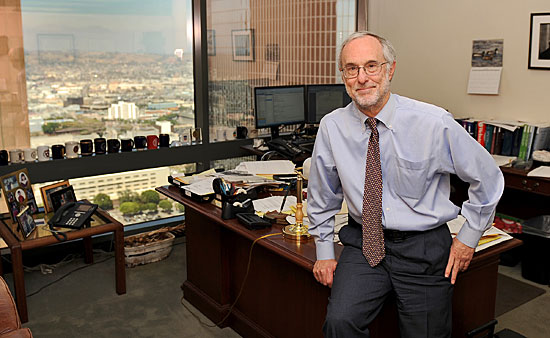
Former federal prosecutor Richard E. Drooyan is leading the investigation of deputy force in the county's jails.
When it comes to police scandal and reform, attorney Richard E. Drooyan has found no shortage of opportunity in Los Angeles.
A former high-ranking member of the U.S. Attorney’s Office, he served on the Christopher Commission after the Rodney King beating and helped lead an independent inquiry into corruption by anti-gang officers in the LAPD’s Rampart Division.
Now, he’s back, this time as general counsel to the Citizens’ Commission on Jail Violence, a panel created in October by the Board of Supervisors to investigate alleged brutality and management failures in the county jail system. The commission is packed with marquee names in law enforcement and legal circles. But it’s the lesser-known Drooyan who’s largely orchestrating the historic effort—with the quiet help of some of Los Angeles’ most prestigious law firms.
Drooyan is drawing on a model that dates back to the Christopher Commission, one not widely known beyond Los Angeles’ legal community. Today, as in the past, he’s drafted an army of high-powered lawyers to conduct every facet of the investigation, assigning each with responsibility for a specific area of inquiry. Those attorneys, in turn, have dipped into the ranks of their own firms.
In all, some 50 lawyers, representing ten firms, have been pressed into action—without a single billable hour among them.
“Fortunately, there’s been a history of very talented lawyers in the town’s top firms who’ve been willing to devote pro bono hours to these kinds of investigations,” Drooyan said from his office at Munger, Tolles & Olson. “The reality is, you need experienced people who can devote a lot of time and energy but you don’t have the budget to pay them. If you were to add up the final billable hours for the jail commission, it would be north of seven figures.”
The payoff, so far, has been substantial. This unsung cadre of legal firepower has identified and interviewed scores of witnesses, reviewed hundreds of documents and, in a series of public hearings, elicited dramatic testimony suggesting that the department’s second-in-command contributed to a climate in which jail deputies used unnecessary force.
The Commission’s chair, retired federal judge Lourdes Baird said the legal team has become “an integral part of our commission’s efforts” and “exemplifies the best of public service in our legal community.”
One of the recruited attorneys is Nancy Sher Cohen of Proskauer Rose, who calls herself a “worker bee for the commission.” Like Drooyan, Cohen also served on the Rampart panel. “Most of us tend to work on corporate litigation,” she explained. “Of course, you love your clients but this has a social justice piece that makes it very special.”
Bert Deixler, who served with Drooyan on the Christopher Commission and has been tapped for the jail study, says the unique investigative approach also provides newer attorneys with the experience of having societal impact while serving with seasoned law veterans across the city, a rare opportunity in a highly structured business.
“You take some young stars in your firm and say, ‘Here’s a chance to pay it forward.’ There’s a sense for all of us that this is part of what lawyers are supposed to do. It’s not just about collecting money,” says Deixler, a former member of the U.S. Attorney’s Office who’s now a partner with Kendall Brill & Klieger.
To get a feel for the job at hand, the recruited lawyers toured the troubled Men’s Central Jail on the edge of downtown, built mostly during the early 1960s. With more than 4,000 inmates packed into dark cells, it’s become the primary focus of the commission’s inquiry.
“For those who hadn’t seen it before, they came away from the experience feeling speechless,” said the commission’s executive director, Miriam Krinsky, who went on five of the trips. “It can’t help but hang with you.”
The attorneys assembled by Drooyan are a formidable group. Many are former federal prosecutors—skilled investigators with experience in analyzing data and coaxing reluctant witnesses to come forward. Already, their effectiveness has been on display during a series of headline-generating hearings during the past several months.
This was particularly true on May 14, when Drooyan presented as witnesses three retired jail supervisors. Their testimony went beyond the more familiar allegations of brutality and suggested that a series of moves by a top Sheriff’s Department manager undermined jail supervisors and led to higher levels of excessive force.
They described a culture in which longtime jail deputies—who, like some behind the bars, dub themselves OG’s, short for “Original Gangsters”—seemed to carry more clout than their bosses. Retired Sergeant Daniel Pollaro told of insubordinate deputies changing work assignments that their supervisors had created to break up “cliques” on floors throughout Men’s Central Jail. Retired Lt. Alfred Gonzales, meanwhile, recounted, among other things, the resistance he met while patrolling those floors in an effort to keep deputies in line and out of trouble, a practice not embraced by his predecessors.
But the testimony that raised the most eyebrows was Gonzales’ account of a meeting that then-Asst. Sheriff Paul Tanaka convened with jail supervisors in 2006, which followed an unusual closed-door session he’d held with complaining deputies.
“You guys are a bunch of dinosaurs,” Gonzales quoted Tanaka as saying. “Your supervisorial skills are antiquated.” According to Gonzales, Tanaka instructed the supervisors to “coddle” the deputies and to “stay off those floors and let those deputies do what they have to do.”
“The chain of command was totally broken,” Gonzales testified.
Tanaka, now the department’s undersheriff, is scheduled to appear before the commission in late July, along with Sheriff Leroy Baca. Neither has commented on last month’s testimony.
By all accounts, one of the biggest challenges for this commission—like others before it—is not only to identify witnesses but also to get them to testify publicly.
Drooyan said that Gonzales and Pollaro agreed to testify because after spending much of their working lives in the Sheriff’s Department, “they genuinely wanted to see issues addressed that were of deep concern to them.”
Sometimes, though, it can be tougher, especially in eliciting cooperation from current members of the department.
“They feel their careers are on the line,” said Fernando Aenlle-Rocha, a former federal prosecutor who’s now with the firm of White & Case. “We don’t have subpoena power and we can’t immunize people—the kind of tools that are given to prosecutors. You can just use your persuasive skills.”
So far, according to a recent commission status report, more than 150 potential witnesses have been identified between the five investigative teams created to examine the jail system’s management and oversight, use of force, culture, discipline and personnel. Each team will write a chapter for the commission’s final report, which is expected to be issued in early fall after more hearings. The full commission has met nine times to date. A committee held its first community forum on May 30.
Executive Director Krinsky stressed that the Sheriff’s Department and the commission have been extremely cooperative with each other. “It’s not a ‘gotcha,’ ” she said.
Drooyan agreed, adding that Baca himself has personally assisted in the commission’s requests for information.
“Everybody,” Drooyan said, “wants to improve the jail.”
Updated: At the Decemember, 4, 2012, meeting of the Board of Supervisors, Drooyan was appointed to oversee implementation of more than 60 reforms recommended by the jail commmision in its final report, which was released in September. Click here to read it.
Posted 6/13/12
Ask Zev about Wilshire ramps
June 13, 2012
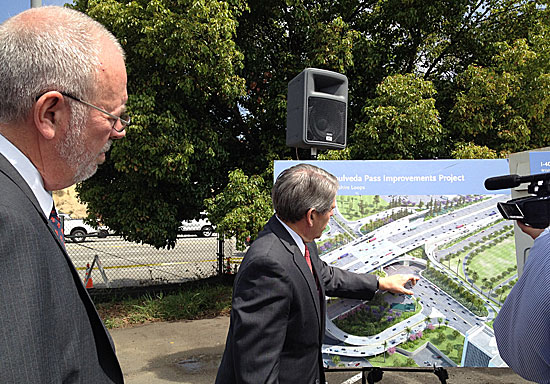
Supervisor Yaroslavsky briefs the media about Wilshire ramps work, as project head Mike Barbour looks on.
With “Ramp Jam” (aka The Rampture) fast approaching, Supervisor and Metro director Zev Yaroslavsky will be answering your questions about the long-running closure of the Wilshire Boulevard ramps to the 405 Freeway in an online chat Friday, June 15.
He’ll be joined by Metro construction experts for the chat, which begins at noon. You can join the hour-long online session while it’s in progress, or email questions in advance to [email protected].
The ramp closures are set to begin June 22, and will last about a year. Traffic conditions in the area already are among the nation’s worst—and construction will likely make things even more challenging. There are alternatives for commuters, however. And the finished result—modern new “flyover ramps”—will create a safer intersection with better traffic movement.
The ramp work is part of the 405 Project to build a 10-mile northbound carpool lane along with other improvements. “Carmageddon II,” a repeat performance of last year’s extended closure of the entire freeway, is expected later this summer.
Posted 6/11/12
Beach chief up for assessor post
June 12, 2012
Santos Kreimann, who has led the county’s Department of Beaches and Harbors since 2009, could become the new temporary head of the controversy-plagued Assessor’s Office under a recommendation made to the Board of Supervisors Tuesday.
Kreimann would take over for Assessor John Noguez, who announced he will be taking a voluntary leave of absence as soon as a temporary successor is in place.
Chief Executive Officer William T Fujioka recommended Kreimann for the position, citing his professional experience, including a stint in the CEO’s real estate division, as well as his managerial acumen.
“I feel that Santos, with his background in real estate and his very strong, to the point of exceptional, management skills, would be an ideal candidate for this assignment,” Fujioka told supervisors Tuesday.
The board is expected to take up Fujioka’s recommendation next week. If supervisors agree that Kreimann is the best choice, he would be appointed by Noguez to run the department in his absence. While the assessor himself must make that appointment, Noguez has said he preferred to stay out of the selection process to “remove any possible concerns” about his involvement.
Noguez’s leave of absence comes as he and members of his staff are being investigated by the District Attorney’s office on allegations of preferential treatment of some property owners. In announcing his decision to go on leave earlier this month, Noguez urged supervisors to designate “a highly qualified person” he could appoint to manage the office in his absence.
In a statement Tuesday afternoon, he asked his staff to support Kreimann while he is on leave, adding: “He will have my full authority to manage and oversee the department.”
If Kreimann moves over to the Assessor’s Office on the temporary assignment, Beaches and Harbors will be run in the interim by its three assistant directors, Fujioka told supervisors.
Kreimann, who said he was surprised to be tapped for the assessor’s post, said it’s unclear how long the assignment might last.
“It could be a year or three months; it could be all the way into 2014,” he said.
Whatever the timetable, he said, it will be important to review policies and procedures and make adjustments, if necessary, to prevent “bad things happening.” Another top priority: lifting employees’ morale.
“They’ve been beat up. And I would imagine they’ve been embarrassed to a certain extent,” Kreimann said. “I think it’s important for anyone who goes in there, whether it’s myself or someone else that goes in, to give them some confidence that they’re doing the right things.”
It’s all about making sure the public can believe in the integrity of the office, he said.
“Ultimately it all translates into making sure that the public trust is regained, and that people have confidence in the employees and the work we do in the assessor’s office.”
Kreimann, 47, a 22-year county veteran, lives with his wife and three daughters in Whittier. For him, the saying “county family” is more than just an expression—he has a brother in the Chief Executive Office and a sister in the department of Human Resources.
And when the “family” needs help, he said, there’s really one way to respond.
“When Bill approached me, I felt that I had to do it to help the county as a whole,” he said. “We’re all one big family.”
Posted 6/12/12
This show’s for the dogs (and cats)
June 11, 2012

Veteran Alexander Trotto and his black Lab Teka are one of the success stories in "Shelter Me," coming to PBS.
The PBS documentary Shelter Me shows how both people and animals can benefit from pet adoption. A benefit screening on Thursday, June 14, aims to keep the success stories coming by raising funds for the Los Angeles County Department of Animal Care & Control and Los Angeles Animal Services.
The family-friendly documentary is hosted by actress Katherine Heigl, a longtime animal lover and advocate. It examines how shelter pets help returning war veterans cope with post-traumatic stress disorder, follows two stray dogs from the streets into new homes and explores a dog training program at a women’s prison that helps inmates and people with disabilities.
All proceeds from the showing will be split evenly between the two organizations, which together handle 140,000 cats and dogs a year. Some pet adoption scenes from Shelter Me were filmed locally at the county’s Baldwin Park Animal Care Center.
The Baldwin Park location is one of 6 county centers, where animals can be adopted; before going to their new homes, they receive a free veterinary checkup, low-cost spaying or neutering and initial vaccinations. Also, owners can bring in pets for reduced-price vaccinations and free “microchipping” to make it easier to reunite missing animals with their families.
The benefit showing takes place at 7:30 p.m. on Thursday, June 14, at the Laemmle Monica theater in Santa Monica. Tickets are $20, and additional donations are welcome.
If you miss the benefit but still want to watch the documentary, it airs on PBS SoCal on Tuesday, June 19, at 7 p.m.
Posted 6/11/12
Righting a wrong, 70 years later
June 7, 2012

Actor George Takei's testimony drew a standing ovation at the Board of Supervisors meeting Wednesday.
The forced uprooting of Los Angeles County’s Japanese American community took place seven decades ago—but the emotional wounds it inflicted continue to this day.
A series of speakers—including Star Trek legend George Takei—vividly recreated the trauma of those days before the Board of Supervisors Wednesday.
After they spoke, the board voted to undo a lingering vestige of the World War II era hysteria that swept families of Japanese descent from their homes and herded them into horse stables at Santa Anita before packing them off to internment camps.
Supervisors, acting on a motion by Supervisor Mark Ridley-Thomas, voted to rescind a 1942 county resolution urging the forced relocations.
“It’s never too late to do the right thing,” Ridley-Thomas said.
Doing the right thing, in this case, meant first confronting the painful details of individual experience that grew out of a cascade of federal, state and local actions.
Takei recalled a day in April, 1942, when he and his brother looked out their living room window and saw “two American soldiers with bayonets flashing on their rifles come marching up our driveway, stomped on our front porch and banged on our front door.”
“My father answered it, and we were ordered out of our house,” he continued. “And I remember seeing my mother carrying my baby sister and a huge duffel bag…and I saw tears rolling down her cheek.”
Their odyssey took them from a stable at Santa Anita that still “stank of horse manure” to “a barbed wire camp in the swamps of southeastern Arkansas,” Takei said.
Rose Ochi, a pivotal player in establishing the national historic site at Manzanar, one of 10 internment areas across the country, made a similar trip as a child—and was literally changed for life by the experience.
“My mother had given me a fine name, Takayo, which means a child with high ideals. But my Arkansas teacher decided to give me an American name, Rose. As years pass, I feel at least thankful that I didn’t get Petunia,” Ochi said with a laugh.
“But let me tell you,” she continued, “when you are not considered a real American, and you come to feel like you’re an outsider, it can be very damaging to a young child.”
Many speakers asked the board to act on behalf of those who were no longer here.
Ken Inouye of the Japanese American Citizens League remembered his Colorado-born father as a “proud American” who had been “living the American dream” before the U.S. entry into World War II. But he had the misfortune of graduating from UCLA in 1941, and found himself catapulted into a new world where he was suddenly being told “we don’t want your kind.”
“Please do this and honor his memory,” Inouye urged supervisors before their vote.
Board chairman Zev Yaroslavsky said the speakers had helped the supervisors to “walk a mile in your shoes.”
“This is more than a symbolic act on the part of the Board of Supervisors today,” Yaroslavsky said. “It is statement of humanity on our part. It’s an instruction to all public officials, all bureaucrats, all decision-makers, to stop, look and listen when the temptation to paint all peoples with one brush or violate our Constitution present themselves.”
The day held many emotional moments.
“I hope our country will never go through this again, although I’m not sure,” Supervisor Gloria Molina said tearfully.
And William T Fujioka, the county’s Chief Executive Officer, choked up as he related his own family’s history during the period. His grandfather, a prominent Little Tokyo business man, was picked up and sent to Leavenworth prison without charges. His father, a fourth year student at Berkeley, “was removed from his classes and then with the rest of his family taken to Heart Mountain.”
But, Fujioka said, his father went on to fight for his country and became a decorated veteran of the 442nd Regimental Combat Team of Japanese American soldiers. “My father taught me not only to be a proud Japanese,” Fujioka said, “but a proud American.”
In their action Wednesday, supervisors formally rescinded their predecessors’ resolution of January 27, 1942, which warned that people of Japanese descent in California “would constitute a potentially dangerous fifth column enemy” in the event of an invasion.
It urged the federal government to move these residents “from the Pacific Coast areas and care for them at inland points where they could till the soil far removed from airfields, power and water lines and other strategic defense facilities.”
“It is difficult if not impossible to distinguish between loyal and disloyal Japanese aliens,” the motion said, while an accompanying letter added:
“As thousands of our men are being killed by the Japanese it would seem only fair and logical that those Japanese who are loyal to the United States would understand the wisdom of such action and would not object, while those disloyal would object and thereby prove their disloyalty.”
The 1942 resolution “would be comical if it weren’t so tragic,” said Bill Watanabe, executive director of the Little Tokyo Service Center, who was born at Manzanar.
He said it was important to disavow the motion and what it stood for.
“This kind of thinking cannot exist in the great county of Los Angeles, which takes pride in its own diversity—so that no matter whether you wear a turban or a hoodie, or whatever group you’re from, your rights will always be respected.”
Watch the testimony from Wednesday’s Board of Supervisors meeting in this video.
Posted 6/7/12





